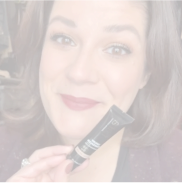Your skin tone will inform the rest of your makeup purchases: ranging all the way from foundation, and concealer, to blush, and eyeshadow. But what about your skin’s undertone?
There are a few ways people categorize the skin’s undertone. In this article, we’ll review what types of undertones there are, and what sort of makeup looks to try based on your undertone.
Undertone Shades
First, assess your skin tone. Usually, skin tone is described as the following: fair, light, medium-dark, or dark. Another way to describe the range of skin tones can include light, medium, tan, or deep. Of course, that’s a broad way to describe most skin tones. That’s why understanding your undertone will bring you more specific results regarding your makeup choices.
Okay, once you’ve identified your skin tone, there are a few common ways to further describe your tone:
- Pink
- Yellow
- Neutral
- Warm
- Cool
Most people will have a slightly pink/rosy undertone, a peach / yellow undertone, or a pretty neutral undertone. If you’re not quite sure, you can also describe it as either warm or cool. Warm undertones are typically described as peachier, while cool undertones are typically described as blue or purplish.
Which One Are You
With that information, your skin’s undertone might be obvious to you. If not, there are a few more ways to indicate what best matches your undertone.
- Think about your jewelry: if you typically wear gold, you probably have warm undertones. If you typically wear silver, you probably have cool undertones. If you go back and forth between both, you probably have neutral undertones.
- Look at your veins: Green veins typically indicate a warmer undertone, bluish veins typically indicate a cooler undertone, and veins that appear blend rather colorless typically indicate a neutral undertone.
- Your wardrobe: Do certain colors tend to wash you out? Or accentuate your undertone? Some people avoid wearing colors that match their undertone without even realizing that’s why.
Whatever your combination may be: fair & pink; medium & yellow; dark & neutral; your undertone and overtone matter equally.
Think about it like editing a photograph. If you increase the saturation, you’ll see clearly which colors are present. With a photograph, you can pretty easily play around to find out more about what colors are living underneath. Perhaps you adjust the warmth or brightness, increase or decrease shadows. In any case, you’ll begin to notice the range of colors that you didn’t see at first. The same can happen for your undertones, you might not notice until you start playing around with different clothes, jewelry, or makeup products.
What Makeup Looks To Go For
Regardless of undertone, selecting the correct shade of concealer is essential. You want to elegantly cover up any problem spots without making it obvious. For best results, Fièra Cosmetics recommends selecting a shade of concealer that is a shade lighter than your overtone.
To guide your lipstick, eyeshadow, and blush color selections, take into consideration your hair and eye colors. If you have fair skin, a pink undertone, light eyes, and dark hair, you can probably rock a few jewel tones. That also applies to people with a darker complexion, and neutral undertones.
If you have tanner skin with yellow undertones, take advantage of the browns, golds, and deeper shades of orange/red. If you have a light complexion with rosy undertones, you can also take advantage of light shades and neutrals.
In Conclusion
Whatever your overtone and undertone, color combination is key. Notice what colors compliment your skin tone, eye color, and hair color using this guide, and decide what makeup look is best for you.
For more tips and tricks about makeup and mature skin, visit our blog.


